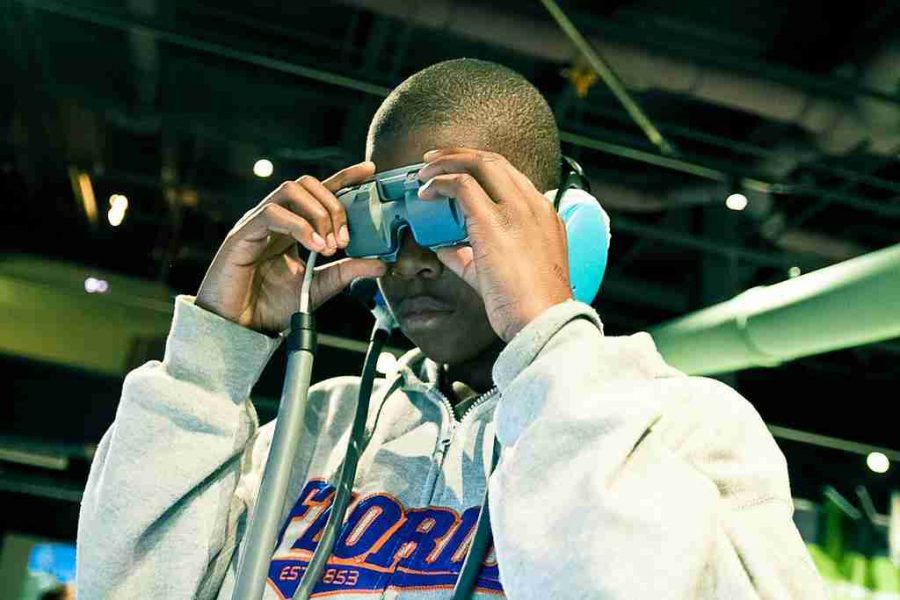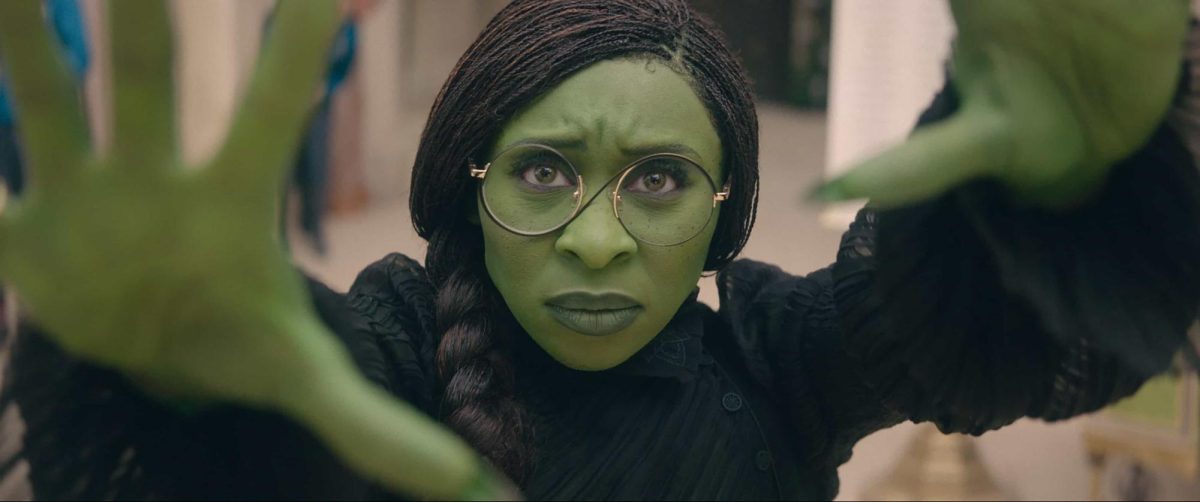A swath of technological innovation body-snatches the Orlando Science Center every year around Martin Luther King Jr. Day. In its seventh annual holding, the Otronicon swooped in this weekend to display the latest tech-wares in the fields of medical, military and police simulation training. Video games, 3-D image mapping, and laser tag complimented the fray amid the Science Center’s usual intriguing exhibits.
“Otronicon is an event where we celebrate the impact that interactive technology has made on how we live, learn, work and play,” said Jeff Stanford, Vice President of Communications at the Science Center. “We do that by joining with a number of industry partners – EA Sports, Lockheed Martin, Florida Hospital, Walt Disney World, a number of digital media schools in town, the military – and we come together to demonstrate the huge impact technology makes in our lives.”
All three stories and every room of the Science Center was brimmed with differing devices from varying entities, as music from popular video games like “Fallout 3,” “Call of Duty Modern Warfare 2,” “Tetris,” “Battlefield Bad Company,” “Mario,” and “Legend of Zelda” played through speakers to set the ambiance.
In their first year at the convention, Disney had taken over the room originally designated as Dr. Dare’s Laboratory for a lecture on potential and kinetic energy’s place in roller coaster physics. The Saturday afternoon presentation was given over an intricate thrill ride model built from K’Nex pieces.
EA Sports also had their own area, inside the dinosaur bone exhibit. In one corner visitors lined up to be photographed and inserted onto the cover art of a Madden game. Another section showed off a prototypical device made just last week by A. J. Jeromin of Electronic Arts’ Emerging Intellectual Properties Group. The steam-punk styled contraption, dubbed the “Reality Face Capture,” held six cameras which devised a picture-quality 3-D image of a human face on screen within minutes. The whole thing was made out of wires, PVC pipe, toilet drains and cameras.
“This actually would have been really helpful for us in the past,” said Jessie Mariani, Production Coordinator at EA Sports’ Maitland location. “We had to do all sorts of 3-D imagery, then render it and outsource it – this stops all of that.”
Despite marquee logos like Disney and EA, the crown jewels of the convention were the training simulation technologies.
“I think its good exposure, because otherwise most people won’t get to play with this kind of stuff,” said visitor Ryan Stowers, 33. “Normally you’d have to go to either college or some type of technical school, or be enlisted in the military to see these things.”
The medical training technology, provided by the Florida Hospital for Children, catches the eye most evidently when perusing Otronicon.
The SimMan is a flesh-colored dummy that has a pulse and rising chest to recreate respiration, and is connected to a computer screen which displays vitals.
“We’ll take him to school groups, and we’ll actually simulate a cocaine overdose,” said Science Center employee Stephanie Esler. “You can simulate heart attacks, asthma attacks – all kinds of things.”
Other models include SimKid, a wireless 3G version of SimMan, and SimBaby, which Esler described as “creepy.” The newer 3G SimMan, unlike the SimMan on display at Otronicon, actually has eyes which can track movement, and even cry. Varying versions are used at Seminole State College, Valencia College, Orlando Tech, and Winter Park Tech, according to Esler.
Adjacent exhibits simulated surgery. Laparoscopic Training Boxes used clamp-like robot arms and a magnified image on a screen to allow visitors to suture a flesh-like piece of foam. A neighboring section showed off the DaVinci, a giant robotic appendage used in surgery and operated from a station with 3-D rendering. A visitor patiently used the apparatus to pluck pieces out of the electronic shock game “Operation.”
An animated scenario played out on the screen where, as a police officer, the user must confront a disturbed man in an alleyway after receiving a complaint. The avatar responds to voice commands from the user with varying degrees of compliance, from full cooperation to complete antagonism.
Trainees must react by talking the suspect down or defending themselves with the taser. Other weapons available include a handgun, baton and OC spray. The outcomes vary, and can be controlled from the computer. There are around six different endings for eight scenarios. In one the subject abruptly fell over and started having a seizure as soon as dialogue commenced.
After the exercise, trainees can go over the course of events with an instructor in an after-action review which records the entire engagement.
“A lot of systems don’t have that right now, where you can interact with the avatar,” said former police officer Al Uy of the Novonics Corporation. “It’s going to change how we see training in law enforcement. The new generation’s technology has really separated us from the interaction of people. This is going to bring us back to how important it is to talk to people, how to respect them, how to address them – it’s all encompassing. It’s not just going straight to the weapon. You have to talk through problems – de-escalate.”
For gun-nuts and flyboys, the military simulators were the staples of Otronicon.
Lockheed Martin had a life-sized flight simulator with accurate controls, and US Marines oversaw a multi-desktop tactical decision making computer game called V.B.S. 2 (Virtual Battle Space 2), a component of the D.V.T.E. (Deployable Virtual Training Environment). Marines can use this training aid in non-field environments like barracks or on board ships.
Basically an inflated online multiplayer game, the V.B.S. 2 includes all the intricacies and equipment assets of real-life expeditionary forces, including tanks, artillery and air power, all controlled by other trainees simultaneously. Young visitors occupied the station at each laptop, blasting Taliban in a virtual rendering of a US base in Afghanistan.
“It’s scalable, so you can use a map of pretty much anywhere,” said Marine Lt. Col Dennis Butler. “I can go to 29 Palms; I can go to Baghdad; I can go to New York City. They’ll scan the map, put it in there and build the town, and you can actually run the mission off of this.”
These were merely a few of the tech-wares displayed at the four-day event. Otronicon’s niche is essentially interactive simulation – video gaming, namely, but larger and more hands on. And despite the fun-factor involved in such an event, one of its main purposes is to educate younger crowds.
“Otronicon has a couple of major priorities, and probably the biggest one is to get young people excited about science and technology careers,” said Stanford. “The S.T.E.M. crisis is a really big deal for us – S.T.E.M. being science, technology, engineering and math – these are courses that American students are struggling with right now. So what we do is use the appeal of video games and interactive technology to bring the kids in, get them engaged, and show them that science is running through that.”







